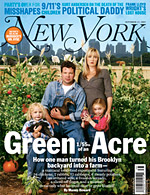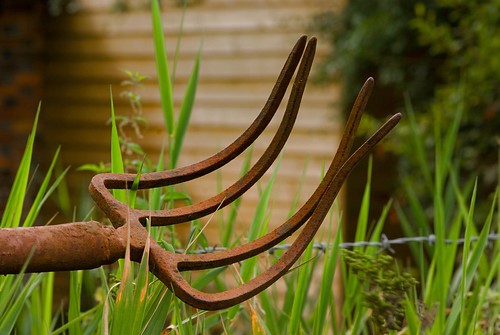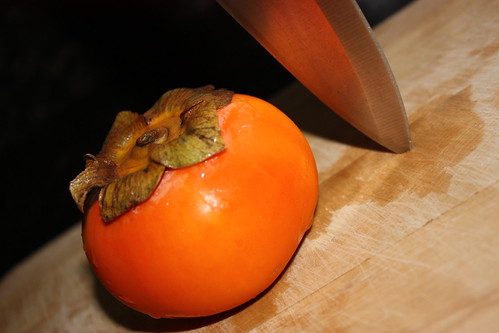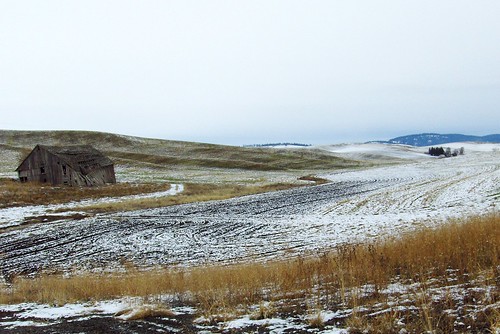Feast or Famine?
The population grows,
The need for meat, dairy and crops increases,
Tillable land shrinks, and water supplies dwindle.
So, how do we manage feeding a population pushing 9 billion with limited inputs and a climate in crisis?
That’s the BIG QUESTION!
Check out this YouTube video from the Institute on the Environment, University of Minnesota

Personal Journal – November 7, 2009
Rarely do I write about my personal experiences or life on my suburban homestead. That’s not what I wanted this blog to be. But, sometimes in life things happen that you just want to share. Not because they are overwhelmingly important or informative, but because they bring a certain insight into the life many of us are trying to live.
I woke suddenly this morning, unaware of the reason. When I got my bearings I rolled over to look at the clock. It was a little after four. I lay there for a while staring at the red numbers in the darkness, then took a deep breath and rolled over again trying to fall back to sleep. As I settled in my toasty, warm bed I listened to the rain. It’s been raining since yesterday – a slow and steady soft kind of rain. The kind that is quickly absorbed by the soil…the kind that nourishes the garden rather than drowning it. I lay their snuggled under layers of homemade quilts and down comforters listening to the pattern of the drops rolling off the eves. Plink…plink…plink, plink…plunk. It came down softly hitting something below.
As I laid there in my warm bed, I tried to figure out what the rain was hitting. I always try to move potential noisemakers before the rainy season starts, but I must have missed something. A splashing noise drew my attention to window on the other side of the room. It was a steady sound, like a brook bubbling and stumbling over rocks in a stream. It was my rain barrel filled to overflowing.
I had always wanted to collect rainwater, to use in the garden when the time between winter storms was long and spring and summer months provide almost nothing. I’m trying to offset using municipal water. It’s a crude set-up though, several large plastic trash cans connected with PVC pipe so the full barrels can flow into the empty ones. Any hardcore homesteader might laugh at the simplicity of it, but it works.
The rain still falls steadily.
It’s dark and quiet, the comforting time of the morning. Off in the distance I could hear the faint sounds of roosters crowing. It’s amazing how far off they sound at that time of the morning considering the barn is only 80-feet away. The sound was deep and throaty from a bird well seasoned at these early morning rituals. But, below him came a barely noticeable strange sound, ur…ur…ur. It was the sound of a roo just learning to crow.
Actually, it was cockerel, young male roster. But I never really bother with using correct terms. They sound so stuffy and unfriendly.
The chicks we hatched back in April would be old enough. But, my amusement gave way to disappointed as well. I have too many roos already, so any new ones will be put into the freezer. Life on a homestead, even a suburban one, isn’t always fair or kind, but it is necessary. The young roos always sound so funny, like they’re being interrupted in mid-crow or someone has nudged them to be quiet. In any event, it was much too early for them to be sounding off. When it’s daylight, I’ll have to figure out who our new crower is. Read the rest of the story »
With the end of November quickly approaching, nature has signaled the end of the growing season for most parts of the country.
Now is the time to put your garden tools to bed as well, sort of speak. Learn how a few moments of preventative maintenance can help extend the life of your tools by clicking here, and keep your tools in good working order for many more seasons to come.
![]() photo credit: lovestruck.
photo credit: lovestruck.
Heavy rains and rotting pumpkins causes shortage in canned pumpkin supply for the holidays. To read more click here
But, don’t fret. Who needs canned pumpkin anyway. We’re homesteaders and can make it from scratch – real scratch. Try this tried and true alternative (courtesy of a fellow homesteader). Your guests will never know the difference and you may just have found a new holiday tradition.
Better Than Pumpkin Pie
1 cup peeled and cubed butternut squash
1/2 cup peeled and cubed carrot (they add a bright orange color and sweetness)
3/4 cup lightly packed brown sugar
1 tablespoon cornstarch
1 egg, beaten
1 cup evaporated milk
1 1/2 teaspoon ground cinnamon
1/2 tsp ground nutmeg
1 pinch ground allspice
1 pinch ground cloves
1 pinch ground ginger
1 (9 inch) unbaked pie shell
1 pinch ground cloves
DIRECTIONS
1. Place squash and carrot in a saucepan with enough water to cover. Bring to a boil, and simmer over medium heat until tender, about 15-20 minutes. Drain, and cool.
2. Preheat oven to 350 degrees F (175 degrees C).
3. In a blender or food processor, combine butternut squash, carrot, brown sugar, cornstarch, egg, milk, cinnamon, allspice, cloves, ginger, and nutmeg. Process until smooth. Pour into the unbaked pie shell.
4. Bake in preheated oven for 50 minutes, or until a table knife comes out clean when inserted in the center.
For a sinfully delicious topping, whip heavy cream with a little sugar, vanilla and cinnamon.
NOTE: Since most hard winter squash are interchangeable many of them can be substituted for the butternut squash in this recipe. Experiment with different varieties to discover your family’s favorite.
…and neither is homesteading.
Personal Journal – November 22, 2009
It’s a point I try to make often to my more skeptical town friends. Sometimes even we homesteaders have those quiet lazy days where little is thought about and even less is accomplished. Yesterday was one of those days. We woke up late, about 7:30 (a luxury that is not afforded us when there are sheep in the barn). I could hear a young rooster trying to master his crow. The hens were scratching, and fluffing themselves in the dirt, chattering as hens always do. The dogs were on patrol. I could hear them in the bushes, sniffing and prowling about, looking for treasures. These are the kinds of mornings that beg you to stay in bed and quietly listen to the sounds of the farm. You can learn so much by just listening.
By the time I stumbled through the house, Brianne was already laid out on the sofa, buried under a mound of quilts making friendship bracelets and watching a movie I found at a local book sale a few weeks ago. Dakota was at her feet begging for more room to stretch out. Last nights fire was gone, but you could still hear crackles and pops as the embers cooled and died. It was dark and lonely, but could easily be revived with a little encouragement and a few pieces of kindling.
Breakfast was a steaming bowl of porridge, topped with nuts and brown sugar, bananas and milk. By the time it’s ready I’m on my second cup of tea (i’m not a coffee person…so not a coffee person), Earl Gray with a splash of milk and a bit of sugar. From the kitchen I can hear the twitter of birds. I don’t know what type; we have become a kind of way station for passersby’s. Some have a sharp trill in their voice, while others chirp on and on for quite awhile. The crows are back, I can hear their caw, caw, caw, but no sight of the red tailed hawk that perches himself on the arbor.
No – life is not always about work. Sometimes it’s about quiet, easy mornings, warm and safe in a simple home. Oh, don’t get me wrong, there will be work done this weekend, but it will be slower, less rushed, with less urgency for completion than other days. I have a few errands to run in town, the truck needs gas for the coming week, Brianne’s birthday is next week and I need a card, the nesting boxes in the coop need to be refilled and the floor raked out. There’s mulch to lie out in the garden and I want to finish the quilt I’ve been working on. Yes, there will be lots of work this weekend. But there will also be time for sitting back and listening to the sounds of this farm. Time for a second (or third) cup of tea, time for snuggling with a mangy dog trying to hog the sofa and time to just relish what we’ve built with our own two hands. No – life isn’t all about work. A lot of life is about paying attention and enjoying what comes our way, the fruits of our labor. And, if we get a few bumps and bruises or have to tend animals in the rain so be it.
Personal Journal – November 16, 2009
A Mother’s Hands
Last night, while I finished cleaning the kitchen, I looked down at my hands and thought to myself, “my hands are not pretty.” In fact, they’re quite the opposite. The year’s of farming and raising livestock show clearly in the callouses and scars. Newer scratches and wrinkles are a testament to my love for what I do and how I live my life.
As I stood there staring at my hands, I see dirt embedded from days of working without gloves. My pinkie is cut; an encounter with a piece of fence wire and a piece of skin is missing from one of my knuckles. I notice long healed scars, one where I was bitten by a ewe I was trying to worm and another where I was accidently clipped with hoof trimmers instead of the sheep.
My nails are short and uneven, broken and chipped. My hands are strong, but my nails are not. They peel and chip at the slightest bit of work. They haven’t seen a manicurist in years. And, polish is a luxury in time I can’t afford. I use to go. Before the demands of work and family, farm and animals became my life.
I use to go.
But, that’s okay. These small not so pretty hands are a mother’s hands; hands that work hard and love deep. They are strong yet gentle. They might make most people cringe, but they built the barns that shelter our animals, plowed the gardens that fill our table and laid the pipes that water them all. They chop and stack the firewood that keeps us warm. They scoop grain, throw hay, plant seeds, pick fruit, bring new life to our little farm and care for a home and a child.
They are not pretty hands. They are a mother’s hands.
As I stood at my sink, soap suds dripping from my hands, I had to chuckle to myself. I gave up on pretty hands a long time ago. I traded them in for strong, caring hands; hands strong enough to sign the mortgage for our little farm, firm enough to raise a child alone and gentle enough to keep it all moving forward and balanced.
We make choices in our lives. And, sometimes those choices include sacrifices. I have paid a price for my years of working hard without protection – ugly hands.
But, I don’t care. I traded in my pretty hands for strong hands, a mother’s hands and that makes them beautiful hands.
![]() photo credit: Tamara van Molken
photo credit: Tamara van Molken
Winter’s cold winds and harsh temperatures can wreck havoc on a homesteader’s hands and feet. But, with this easy and inexpensive solution you can have baby-bottom soft skin all winter long.
After a bath or shower, or when evening chores are finished and you have time to sit, simply slather a thick layer of lotion over hands and feet, then put on a thick cotton sock. Yep – on your hands too. The warmth created from your body’s heat and the sock causes pores to open, allowing the lotion to soak deep into your skin. You can sleep with your socks on for even better results.
Try this several times a week and you’ll make it through winter without sore, cracked, rough hands and feet.
![]() photo credit: telepathicgeorge
photo credit: telepathicgeorge
 At 6:40 a.m. on August 8, the tornado hit my house in Brooklyn. Most people viewed it as a snow day in summer, a meteorological oddity. Not me. After a sleepless night listening to the wind and the rain intensify, I watched the sky turn green, then heard the hemlock tree in the yard next door split in two, clip the gutter on the third floor of my house, and bounce off the roof of what used to be our garage and had come to be known as “the barn.” As the wind torqued up even further, the limb of an oak torpedoed the most productive quarter of my vegetable garden, smothering a thicket of tomatoes, snapping the fig tree, pulverizing the collard greens, burying the callaloo, and splintering the roof of my main chicken coop.
At 6:40 a.m. on August 8, the tornado hit my house in Brooklyn. Most people viewed it as a snow day in summer, a meteorological oddity. Not me. After a sleepless night listening to the wind and the rain intensify, I watched the sky turn green, then heard the hemlock tree in the yard next door split in two, clip the gutter on the third floor of my house, and bounce off the roof of what used to be our garage and had come to be known as “the barn.” As the wind torqued up even further, the limb of an oak torpedoed the most productive quarter of my vegetable garden, smothering a thicket of tomatoes, snapping the fig tree, pulverizing the collard greens, burying the callaloo, and splintering the roof of my main chicken coop.




Recent comments
Aenean nonummy hendrerit mauris. Phasellus porta.